Interview: 'Ant-Man' Director Peyton Reed Talks Back To The Future, Beavis And Butthead And Fantastic Four
A couple weeks ago I got a chance to sit down with director Peyton Reed and talk about his new film Ant-Man. I've been a fan of Reed for a while now, from his fun 2000 comedy Bring It On (which was basically Pitch Perfect with Cheerleading) to his work within the Back to the Future franchise (he was involved in the Universal Studios ride, the animated series, and even directed the behind the scenes documentaries for the sequels). Here are some of the things I talked to Peyton Reed about:
You can read about all of that and much more in my Peyton Reed Ant-Man interview, after the jump.
Peyton Reed Ant-Man Interview
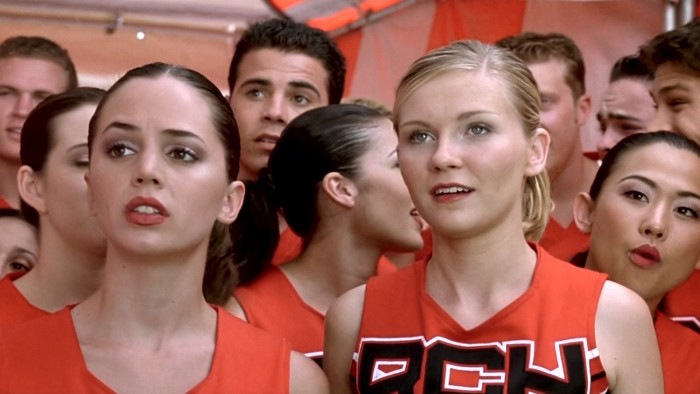 PETER: A big fan of Bring It On.PEYTON: Oh thank you very much. It's kind of a superhero movie, right?PETER: Well you know what, I think–PEYTON: They do have costumes.PETER: Yeah, they do. I think some of my readers might be surprised to learn that this isn't the first time that you've been attached to a Marvel movie.PEYTON: Right.
PETER: A big fan of Bring It On.PEYTON: Oh thank you very much. It's kind of a superhero movie, right?PETER: Well you know what, I think–PEYTON: They do have costumes.PETER: Yeah, they do. I think some of my readers might be surprised to learn that this isn't the first time that you've been attached to a Marvel movie.PEYTON: Right.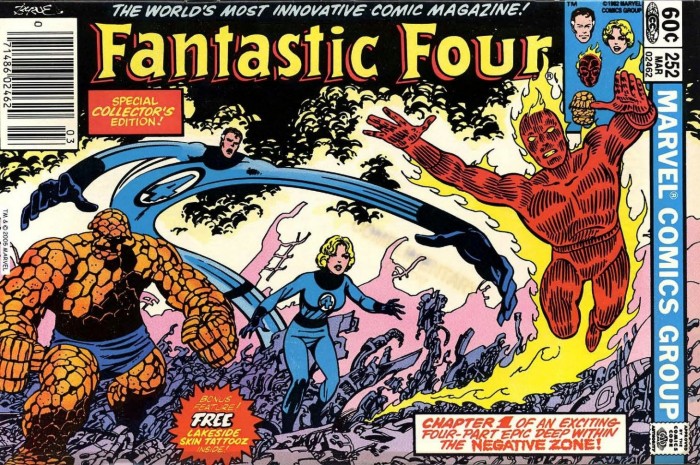 PETER: Can you talk about that?PEYTON: Yeah. In 2003, I was finishing my movie, Down With Love, my second movie at Fox. And they announced they were gonna make a Fantastic Four movie. And I was a Marvel Comics obsessive as a kid. Fantastic Four to me was always sort of the crown jewel of the Marvel Comics world. And so I went in. And I pitched the movie. And here's how nerdy I was. I took all four of my Mego eight inch Fantastic Four action figures into this meeting with Tom Rothman. And I think at the time Avi Arad. And I think, I know Kevin Feige was involved at the time. I don't know if he was in the Fox meeting. But I took them in as a symbol of my nerd cred. But I just, I talked about everything I loved about Fantastic Four. I got the job and developed that movie there for the better part of a year. And I worked with I think two or three different writers at the time. It became apparent to me that I think Fox did not wanna make the kind of Fantastic Four movie I wanted to make at the time. And Marvel at Fox at that time was radically different than Marvel Studios is in 2015. It was the entire landscape has changed. So it was something that was very, very hard to–PETER: What did they want? They wanted more accessible, you wanted more comic looking or?PEYTON: Well, you know, they were chasing a release date and, you know, we were developing the movie. They wouldn't release the money for effects R and D, because I said, whatever version of the movie you have is gonna have a Human Torch, a Thing and a... And it just became obvious that they at that time in my opinion were not gonna treat it like the A list property that it was.
PETER: Can you talk about that?PEYTON: Yeah. In 2003, I was finishing my movie, Down With Love, my second movie at Fox. And they announced they were gonna make a Fantastic Four movie. And I was a Marvel Comics obsessive as a kid. Fantastic Four to me was always sort of the crown jewel of the Marvel Comics world. And so I went in. And I pitched the movie. And here's how nerdy I was. I took all four of my Mego eight inch Fantastic Four action figures into this meeting with Tom Rothman. And I think at the time Avi Arad. And I think, I know Kevin Feige was involved at the time. I don't know if he was in the Fox meeting. But I took them in as a symbol of my nerd cred. But I just, I talked about everything I loved about Fantastic Four. I got the job and developed that movie there for the better part of a year. And I worked with I think two or three different writers at the time. It became apparent to me that I think Fox did not wanna make the kind of Fantastic Four movie I wanted to make at the time. And Marvel at Fox at that time was radically different than Marvel Studios is in 2015. It was the entire landscape has changed. So it was something that was very, very hard to–PETER: What did they want? They wanted more accessible, you wanted more comic looking or?PEYTON: Well, you know, they were chasing a release date and, you know, we were developing the movie. They wouldn't release the money for effects R and D, because I said, whatever version of the movie you have is gonna have a Human Torch, a Thing and a... And it just became obvious that they at that time in my opinion were not gonna treat it like the A list property that it was.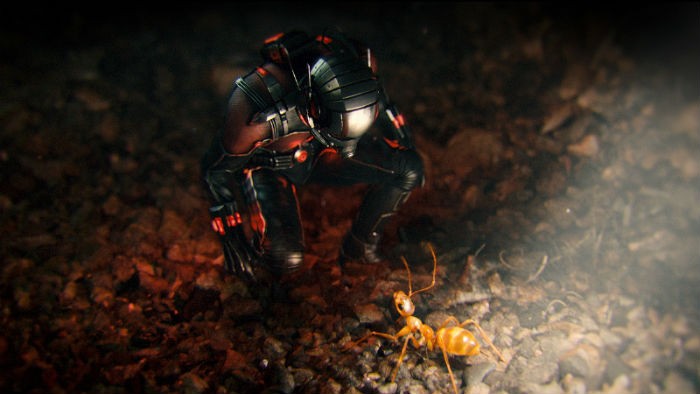 PETER: You talked about special effects. And I feel like watching this movie it looks like it has the most visual effects or C.G. out of any of the Marvel movies so far. Is that the case?PEYTON: Yeah, it's interesting, I think if you do a number count in Ant-Man there are probably between 15 and 1600 visual effects movies. I think in Age of Ultron there were like somewhere between 22 and 2400. Like far more, significantly more effects. But I think the effects in Ant-Man, you know, because they are, they tend to be longer shots. Like when Scott first shrinks in the bathtub, you know, the camera follows him down and goes down and the challenge in these specific types of effects for me was they have to be photorealistic. If we're doing a shrinking movie in the year 2015, we have to set the bar. And it's gotta be photorealistic and we gotta really put the audience down there with Scott Lang when he's shrinking.
PETER: You talked about special effects. And I feel like watching this movie it looks like it has the most visual effects or C.G. out of any of the Marvel movies so far. Is that the case?PEYTON: Yeah, it's interesting, I think if you do a number count in Ant-Man there are probably between 15 and 1600 visual effects movies. I think in Age of Ultron there were like somewhere between 22 and 2400. Like far more, significantly more effects. But I think the effects in Ant-Man, you know, because they are, they tend to be longer shots. Like when Scott first shrinks in the bathtub, you know, the camera follows him down and goes down and the challenge in these specific types of effects for me was they have to be photorealistic. If we're doing a shrinking movie in the year 2015, we have to set the bar. And it's gotta be photorealistic and we gotta really put the audience down there with Scott Lang when he's shrinking.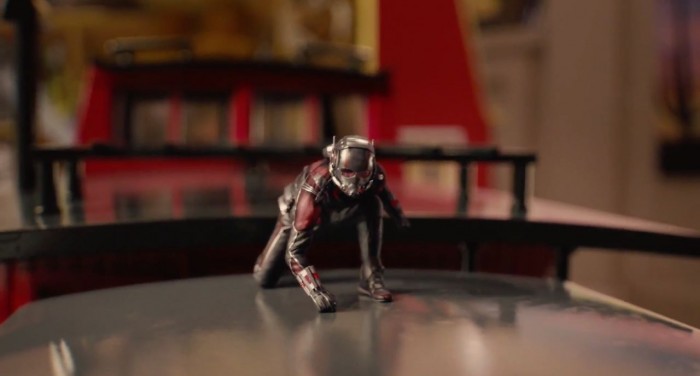 PETER: How do you make it photorealistic then?PEYTON: Well I'll tell you we did a weird combination of motion picture macro photography, which meant, you know, shooting surfaces and miniature sets with these insane lenses. Shooting still macro photography. Where like if there was a scene where Ant-Man was gonna run across the table and leap over my iPhone, we would have a crew shoot this with stills, like thousands of stills. So that we would have a very tactile photo real version of it. But we could recreate it digitally and be able to move the camera around that environment. So we put Paul and Corey in motion capture suits and shot them or captured them digitally and put them in. And then we did lots of actual photography tests in prep. We shot real ants just to see how they moved and how they reacted to light. And we would shoot things like dust and explosions at high speed to see how that would play out. And water. What does water move like?
PETER: How do you make it photorealistic then?PEYTON: Well I'll tell you we did a weird combination of motion picture macro photography, which meant, you know, shooting surfaces and miniature sets with these insane lenses. Shooting still macro photography. Where like if there was a scene where Ant-Man was gonna run across the table and leap over my iPhone, we would have a crew shoot this with stills, like thousands of stills. So that we would have a very tactile photo real version of it. But we could recreate it digitally and be able to move the camera around that environment. So we put Paul and Corey in motion capture suits and shot them or captured them digitally and put them in. And then we did lots of actual photography tests in prep. We shot real ants just to see how they moved and how they reacted to light. And we would shoot things like dust and explosions at high speed to see how that would play out. And water. What does water move like?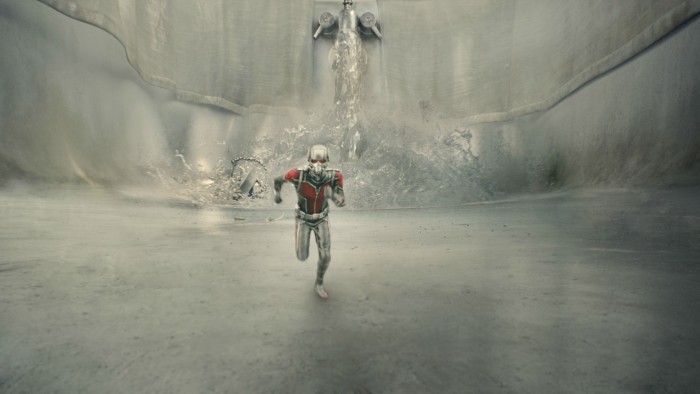 PETER: That sequence with the water is amazing.PEYTON: Yeah. And we did all these things where we shot with actual lenses, real water going down pipes. And then we sort of, you know, we sent that to the visual effects houses and had them recreate it. There's a brief moment where Scott is feeding water to Antony his ant, you know, and it's a ball of water.PETER: Yeah.PEYTON: 'Cause that's what that size the surface tension of water is like. And those are the things that fascinated me. Like the physics of that world and the light, how light played.
PETER: That sequence with the water is amazing.PEYTON: Yeah. And we did all these things where we shot with actual lenses, real water going down pipes. And then we sort of, you know, we sent that to the visual effects houses and had them recreate it. There's a brief moment where Scott is feeding water to Antony his ant, you know, and it's a ball of water.PETER: Yeah.PEYTON: 'Cause that's what that size the surface tension of water is like. And those are the things that fascinated me. Like the physics of that world and the light, how light played.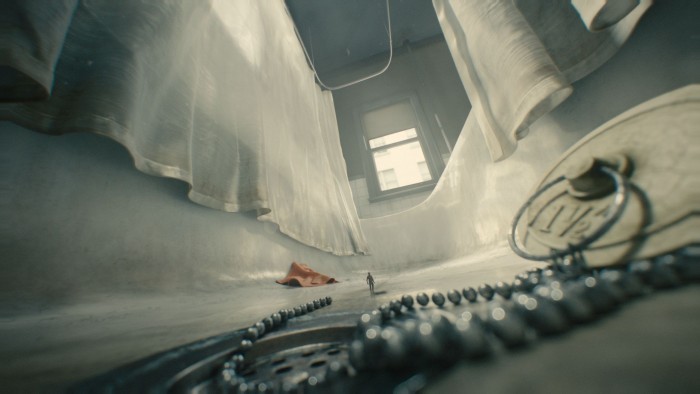 PETER: This might be a hard one, but what do you think is the most surprising thing that is practical? Or what's the most surprising thing that we think is practical but is actually C.G.?PEYTON: Well I think that a lot of the surfaces in the movie, like, you know, there's a shot where Scott falls through a vent and lands on a carpet and very quickly gets sucked up into a vacuum cleaner. The carpet that we shot, it's sort of, it's real carpet and it's digitally enhanced. And the inside of the vacuum cleaner, we put a camera inside a vacuum bag with dust and we created a fan. But then the next shot is a whole digital thing. So we wanted to mix up practical and digital in ways that kind of, you know, if you're an effects nerd would keep you guessing as to how we did it.
PETER: This might be a hard one, but what do you think is the most surprising thing that is practical? Or what's the most surprising thing that we think is practical but is actually C.G.?PEYTON: Well I think that a lot of the surfaces in the movie, like, you know, there's a shot where Scott falls through a vent and lands on a carpet and very quickly gets sucked up into a vacuum cleaner. The carpet that we shot, it's sort of, it's real carpet and it's digitally enhanced. And the inside of the vacuum cleaner, we put a camera inside a vacuum bag with dust and we created a fan. But then the next shot is a whole digital thing. So we wanted to mix up practical and digital in ways that kind of, you know, if you're an effects nerd would keep you guessing as to how we did it.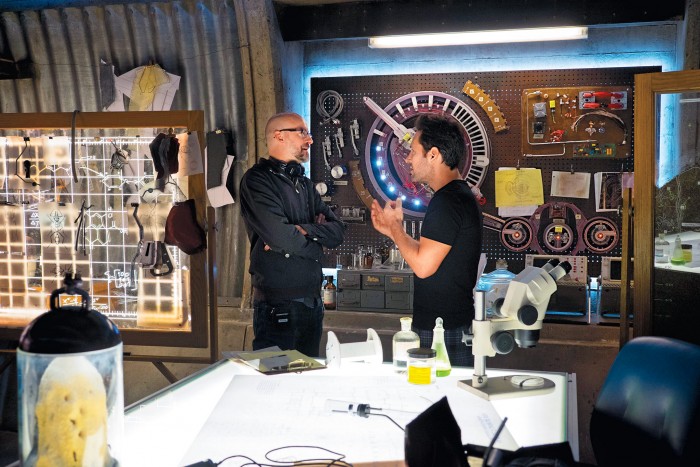 PETER: Well it is seamless. How do you think the project changed from when you came on and Edgar and Joe's draft to what actually made it on the screen? Like what do you believe you bring to the project that wasn't there before?PEYTON: Well, you know, the whole core of what Edgar and Joe created, the idea of doing Ant-Man as a heist movie structure, the idea of making Hank Pym the elder statesman, the mentor and Scott Lang the pupil and also driving toward a third act where the big battle took place in a little girl's bedroom. That's all Edgar and Joe conceptually. When I came on, Adam McKay and Paul started rewriting and we all worked together and, you know, we added concepts like the quantum realm. I wanted to get to a third act where we'd see him shrinking all through the movie, but let's take it a further step. Embrace that sort of Silver Age psychedelic era of Marvel Comics. I also wanted to bolster sort of like the heist language in the movie. These, there's a couple times where Michael Pena's character Luis is giving these tips. That didn't exist in the early drafts of the script and we added it and the idea that he's gotta provide the credible sort of source of his information, but he gets off track. And he's a little A.D.D. and so stylistically that was something that I brought to the movie. We also added a scene where Scott has an encounter with another character from the Marvel Universe. A sort of trial by fire.PETER: Yeah, I know Edgar and Joe's draft did not have many connections with the Marvel Universe.PEYTON: Right.PETER: And there's that scene, but there's also other scenes that have some people we recognize.PEYTON: Yeah.
PETER: Well it is seamless. How do you think the project changed from when you came on and Edgar and Joe's draft to what actually made it on the screen? Like what do you believe you bring to the project that wasn't there before?PEYTON: Well, you know, the whole core of what Edgar and Joe created, the idea of doing Ant-Man as a heist movie structure, the idea of making Hank Pym the elder statesman, the mentor and Scott Lang the pupil and also driving toward a third act where the big battle took place in a little girl's bedroom. That's all Edgar and Joe conceptually. When I came on, Adam McKay and Paul started rewriting and we all worked together and, you know, we added concepts like the quantum realm. I wanted to get to a third act where we'd see him shrinking all through the movie, but let's take it a further step. Embrace that sort of Silver Age psychedelic era of Marvel Comics. I also wanted to bolster sort of like the heist language in the movie. These, there's a couple times where Michael Pena's character Luis is giving these tips. That didn't exist in the early drafts of the script and we added it and the idea that he's gotta provide the credible sort of source of his information, but he gets off track. And he's a little A.D.D. and so stylistically that was something that I brought to the movie. We also added a scene where Scott has an encounter with another character from the Marvel Universe. A sort of trial by fire.PETER: Yeah, I know Edgar and Joe's draft did not have many connections with the Marvel Universe.PEYTON: Right.PETER: And there's that scene, but there's also other scenes that have some people we recognize.PEYTON: Yeah.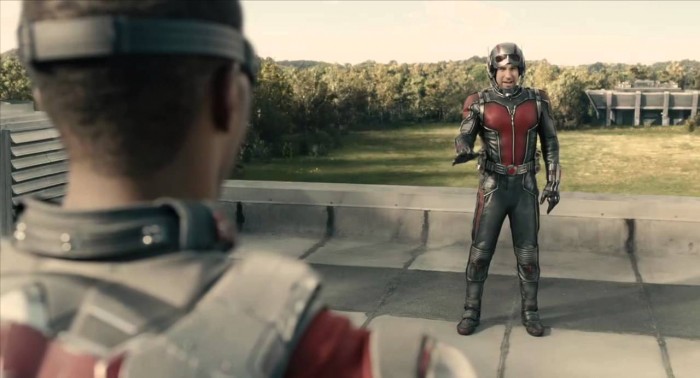 PETER: How did that come about? PEYTON: You know, one of the things I wanted to do sort of with the script was I wanted to deepen Hank Pym's character a little bit. Particularly knowing that we had Michael Douglas playing Pym. I mean, Pym in the comics realm is a incredibly complicated character. Douglas has made a career of playing these characters with a very big gray area. And sort of, you know, some morally dubious characters. And I really wanted to lean into that. I also wanted to have Wasp be a presence in the movie. Both the original Janet Van Dyne Wasp and also driving toward Hope sort of picking up the mantle of her Mother. And in order to do that, you know, that was something that McKay and I talked about as well is let's see a flashback where we see Wasp that didn't appear in any of the Edgar and Joe drafts. I also wanted to really bolster the idea of Scott Lang and particularly with Scott, with Paul playing him, this MacGyver aspect of him when he breaks in.PETER: Oh yeah. That whole fingerprint thing's kind of cool.PEYTON: Yeah. And that was something that McKay and I came up with. We met with this security guy who talked about how do you get into these things. And McKay wrote and I boarded out this whole thing of how he's very simply with these kitchen items gonna get into that thing. And same with breaking into the safe. McKay had this security expert come in and we were talking about how would you break into a safe if you weren't an expert safecracker? And we talked about types of metal that reacted to liquid nitrogen. And McKay wrote that and that was something we brought to the movie as well.PETER: How out of all the Avengers that you could have included in here did you go to Falcon? Like what about that?PEYTON: Wow. That again was something that McKay and I bonded on. Or McKay we know is hilarious, but he's a huge comic nerd. And it's like we knew in the structure of a heist movie we wanted to add those tip montages. That's a trope in those movies. But we also wanted to add this sort of okay, the heist is in place, everything's ready, but oh shit, we need this one extra element. How do we get it? This sort of trial by fire where in order to get this object that was crucial for the heist, Pym had to send Lang into a situation that he might not be equipped to deal with. It was McKay's idea to do it. And it was McKay's idea, we talked about who could it be? And Falcon made sense. First of all, I love that character in Winter Soldier. I love Anthony Mackie. I was a fan of Falcon in the comics. And it made sense. And it made sense because I had two big things when I came into Ant-Man. I was like I wanna make a movie that's under two hours. I want it to be really tight and taut and have the structure of a heist movie, but the rhythms of a comedy and start with a little bit of a slow burn, but once it catches fire, just keep going. But I also wanted to, I wanted a movie that stood on its own if you'd never seen another Marvel movie. Beginning, middle and end. If you have seen the Marvel movies, there are going to be elements that are enhanced by it. But that Falcon scene was absolutely organic to the story, because that thing had to succeed in order for the heist to be pulled off.
PETER: How did that come about? PEYTON: You know, one of the things I wanted to do sort of with the script was I wanted to deepen Hank Pym's character a little bit. Particularly knowing that we had Michael Douglas playing Pym. I mean, Pym in the comics realm is a incredibly complicated character. Douglas has made a career of playing these characters with a very big gray area. And sort of, you know, some morally dubious characters. And I really wanted to lean into that. I also wanted to have Wasp be a presence in the movie. Both the original Janet Van Dyne Wasp and also driving toward Hope sort of picking up the mantle of her Mother. And in order to do that, you know, that was something that McKay and I talked about as well is let's see a flashback where we see Wasp that didn't appear in any of the Edgar and Joe drafts. I also wanted to really bolster the idea of Scott Lang and particularly with Scott, with Paul playing him, this MacGyver aspect of him when he breaks in.PETER: Oh yeah. That whole fingerprint thing's kind of cool.PEYTON: Yeah. And that was something that McKay and I came up with. We met with this security guy who talked about how do you get into these things. And McKay wrote and I boarded out this whole thing of how he's very simply with these kitchen items gonna get into that thing. And same with breaking into the safe. McKay had this security expert come in and we were talking about how would you break into a safe if you weren't an expert safecracker? And we talked about types of metal that reacted to liquid nitrogen. And McKay wrote that and that was something we brought to the movie as well.PETER: How out of all the Avengers that you could have included in here did you go to Falcon? Like what about that?PEYTON: Wow. That again was something that McKay and I bonded on. Or McKay we know is hilarious, but he's a huge comic nerd. And it's like we knew in the structure of a heist movie we wanted to add those tip montages. That's a trope in those movies. But we also wanted to add this sort of okay, the heist is in place, everything's ready, but oh shit, we need this one extra element. How do we get it? This sort of trial by fire where in order to get this object that was crucial for the heist, Pym had to send Lang into a situation that he might not be equipped to deal with. It was McKay's idea to do it. And it was McKay's idea, we talked about who could it be? And Falcon made sense. First of all, I love that character in Winter Soldier. I love Anthony Mackie. I was a fan of Falcon in the comics. And it made sense. And it made sense because I had two big things when I came into Ant-Man. I was like I wanna make a movie that's under two hours. I want it to be really tight and taut and have the structure of a heist movie, but the rhythms of a comedy and start with a little bit of a slow burn, but once it catches fire, just keep going. But I also wanted to, I wanted a movie that stood on its own if you'd never seen another Marvel movie. Beginning, middle and end. If you have seen the Marvel movies, there are going to be elements that are enhanced by it. But that Falcon scene was absolutely organic to the story, because that thing had to succeed in order for the heist to be pulled off.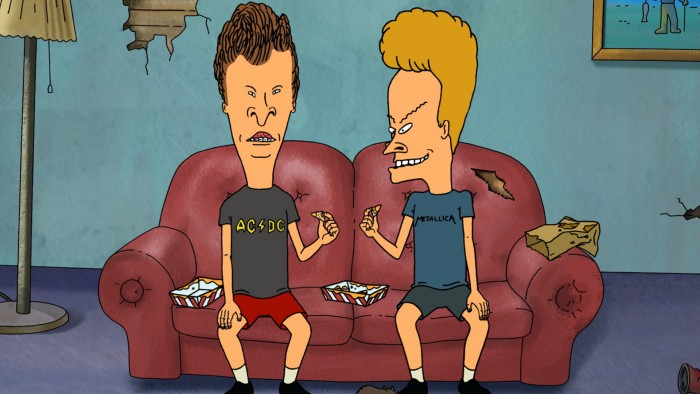 PETER: Looking at your IMDb credits, I notice that you did some voice work for Beavis and Butthead.PEYTON: I did.PETER: So I have to ask what's the story behind that?PEYTON: I went to college at the University of North Carolina with John Altschuler and Dave Krinsky who they worked on Beavis and Butthead, they worked on King of the Hill and they were doing the sort of rebooted Beavis and Butthead. And said, hey, you wanna come do voices? I had done some voices and stuff. And we had a comedy troop in college and I'd worked with those guys. So it became, it came about in a very roundabout fashion. Yeah, it's probably one of the more obscure things on my resume.PETER: That's a cool thing to have on your resume though. One last question.PEYTON: Sure.
PETER: Looking at your IMDb credits, I notice that you did some voice work for Beavis and Butthead.PEYTON: I did.PETER: So I have to ask what's the story behind that?PEYTON: I went to college at the University of North Carolina with John Altschuler and Dave Krinsky who they worked on Beavis and Butthead, they worked on King of the Hill and they were doing the sort of rebooted Beavis and Butthead. And said, hey, you wanna come do voices? I had done some voices and stuff. And we had a comedy troop in college and I'd worked with those guys. So it became, it came about in a very roundabout fashion. Yeah, it's probably one of the more obscure things on my resume.PETER: That's a cool thing to have on your resume though. One last question.PEYTON: Sure.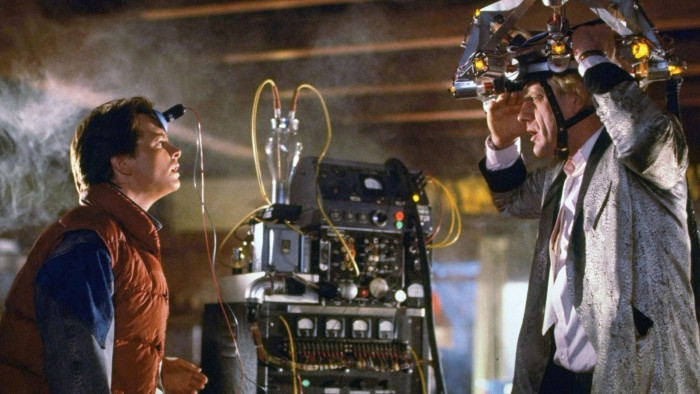 PETER: Are you gonna have any involvement in the Back to the Future 30th festivities?PEYTON: Yeah, there's a couple of books that are coming out. One is just about to come out. It's called We Don't Need Roads by a guy named Caseen Gaines. He interviewed me for that. And there's another book as well that's coming out. And I yeah, I have a very weird association. Like for a time I was kind of the go to Back to the Future ancillary guy. I'd worked on the behind the scenes on Back to the Future II and directed the documentary for Back to the Future III. And directed the live action portions of the first season of the animated series. And co-wrote the Back to the Future ride at Universal. And needless to say, I am a huge Back to the Future fan. As is Kevin Feige. It was one of the things that we bonded. And weirdly...PETER: He has a Marty McFly jacket.PEYTON: Oh yeah.PETER: I've talked to him about it.PEYTON: Oh yeah, he's a huge fan. And we actually talked about that movie a lot in regards to Ant-Man about blending science fiction and action and comedy. And also the idea of a movie that starts slower and is setting up all these elements and then it takes off and answers all those questions. That was a big sort of tunnel touchstone for us.PETER: Okay, well I think they're pulling me away. I wanna say thank you very much.
PETER: Are you gonna have any involvement in the Back to the Future 30th festivities?PEYTON: Yeah, there's a couple of books that are coming out. One is just about to come out. It's called We Don't Need Roads by a guy named Caseen Gaines. He interviewed me for that. And there's another book as well that's coming out. And I yeah, I have a very weird association. Like for a time I was kind of the go to Back to the Future ancillary guy. I'd worked on the behind the scenes on Back to the Future II and directed the documentary for Back to the Future III. And directed the live action portions of the first season of the animated series. And co-wrote the Back to the Future ride at Universal. And needless to say, I am a huge Back to the Future fan. As is Kevin Feige. It was one of the things that we bonded. And weirdly...PETER: He has a Marty McFly jacket.PEYTON: Oh yeah.PETER: I've talked to him about it.PEYTON: Oh yeah, he's a huge fan. And we actually talked about that movie a lot in regards to Ant-Man about blending science fiction and action and comedy. And also the idea of a movie that starts slower and is setting up all these elements and then it takes off and answers all those questions. That was a big sort of tunnel touchstone for us.PETER: Okay, well I think they're pulling me away. I wanna say thank you very much.
